29 Dreaming Artists Collective
Due to the constraints of the exhibition budget, this exhibition could not select some very famous art works as exhibits, so I decided to focus on the selection of exhibits on whether the works can resonate with the audience. I need these works to create a space between reality and illusion for the audience, so that the audience can step into the flow of dreams that cannot be fully interpreted when entering the exhibition. I set three criteria for selection around this goal. First, the theme of the work should be related to dreams, subconscious, memory, etc. Second, the form of the work should be immersive and interactive, which can bring sensory stimulation to the audience to enhance the sense of experience. Third, the artistic language of the work should be open, which can allow multiple interpretations from different perspectives.
In addition, I tend to choose the works of emerging artists, not only because of the constraints of exhibition budget, new artists often have more freedom of expression and more experimental creative language, and are more closely linked to the local youth cultural community, which can enhance the location of the exhibition.
The following is my exhibit list:
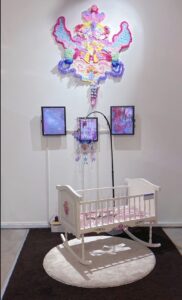
Hotbed’s Alibi, Jie Xie, 2024
Variable size
crib, acrylic, monitoring equipment, display, carpet
“For childhood memory loss, it may be trauma caused by not receiving a positive response to a strong psychological need, and these traumas do not disappear, but appear in more subtle ways, such as nightmares, automatic fantasies, memories actively creating false and true confusion, invasive images, or sudden flashes of memory fragments.” Sometimes it can occur in more dangerous ways, such as repetitive compulsion, where you recreate the traumatic experience you had as a child and repeat the same traumatic patterns. I want to reconnect and pay attention to everyone’s inner child, to confront the trauma, missing or unmet needs, beliefs and patterns of behavior that may have existed during childhood, rather than avoid and fear the trauma and memory loss.” (Jie Xie, 2024)
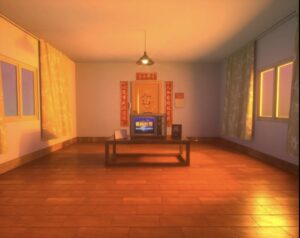
The scene of the virtual dreamscape, Haoyang Chen, 2024
Variable size
video
“Nostalgia is a uniquely human emotion that can bring us comfort and insight. I create a virtual dream filled with Chinese nostalgia, a space that is both connected to the past and full of infinite possibilities, so that young people can reconnect with the past, rekindle their expectations for life, regain their longing for the future, and face the present life with a hopeful attitude. Continue the expectations and imagination of contemporary youth for the future. In this virtual world, I want them to feel familiar and free. You can temporarily get rid of the shackles of the real world, find inner peace and freedom, and pursue the life you really want in the future.” (Haying Chen, 2024)
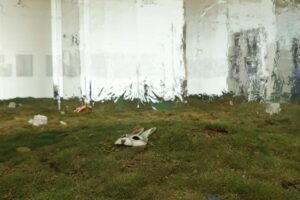
Alice, Jieyu Tan, 2021
Variable size
video equipment, ha ha lenses, dirt, turf
“Alice in Wonderland Syndrome” as a mental illness in childhood, from the beginning of the name to reveal its symptoms. The main material of this installation work is Ha-ha lens. When the viewer is in it, the distorted sense presented by the mirror reflects the pressure, distortion and alienation of the contemporary people. At the foot of the installation, there is a soft lawn, and the rabbit hole is in the center, just like “Wonderland” as a dream woven by Alice’s patient. To escape all the discomfort of real life. The sensory experience brought by the whole space atmosphere of the work is unreal, and it is a metaphor for the contradictions and struggles between illusion and reality, reality and ideal, distortion and calm, pressure and escape of contemporary people. (Tan Jieyu, 2021)
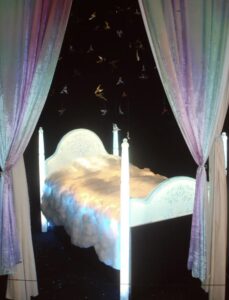
Good Night, Ziyue Jin, 2024
90cm*180cm*120cm
glass, resin, bed frame, cotton, curtains
“Due to the somatization reaction of severe depression, I can spend 24 hours a day lying in bed, which seems to have become an important organ of my body. What is more magical is that the plots in my dreams can be connected like TV dramas, and the places in my dreams can also be spelled into a complete map, as if the existence of a different world. In the dream, there are two kinds of fish, the good fish can walk freely in the sky, and the bad fish will be locked in the cage, which will make me afraid. Due to severe autism and anxiety, fewer and fewer friends kept in touch with me, and the waking time was painful for me. I began to look forward to dreaming every night. Many warm and luminous fish were my good friends.” (Ziyue Jin, 2024)
28 source of funds part 2
Support program for young curators of Guangdong Provincial Art Museum
link:https://whly.gd.gov.cn/gkmlpt/content/4/4518/post_4518599.html#2630
(*Guangzhou serves as the provincial capital of Guangdong, a bit like how Edinburgh functions within Scotland. That is why I will further search for resources available in Guangdong Province.)
I also searched for available funds in Guangdong Art Museum Association and finally found this “Guangdong Art Museum Young Curators Support Program”. This fund is jointly organized by the Guangdong Provincial Department of Culture and Tourism, the Guangdong Provincial Art Museum Association and the Guangdong Art Museum, and the province’s state-owned and private art museums can recommend curators to apply for exhibitions in the museum. Another Art Museum where I have a personal curatorial project fits that bill. Secondly, the declaration of this fund requires a complete exhibition planning plan, and the exhibition must be independently planned by the applicant. My personal curatorial project has already had a complete curatorial plan and was completed by myself independently, which meets this standard. Finally, Another Art Museum can provide the guarantee of the site and hardware facilities to ensure that my personal curatorial project can be implemented in the museum as planned, which meets the condition of applying for funds that “the applicant should fully demonstrate the rationality and feasibility of the exhibition planning scheme submitted by the applicant and promise that the exhibition can be implemented in the museum as planned”.
Based on previous years, my personal curatorial project was able to receive about £10k from this grant.
27 Source of funds part 1
After the exhibition planning is basically complete, I need to start to consider some objective conditions that will affect the exhibition, such as available funds. I plan to find available funds as much as possible, and then further refine the exhibition according to the combination of funds. With this as a starting point, I started a search for funding programs for exhibitions in China. Below are a few of the funding schemes eligible for my personal curatorial project.
Guangzhou special fund for the development of culture and tourism industry
link:http://wglj.gz.gov.cn/gkmlpt/content/9/9725/post_9725881.html#886 (This is last year’s rule announcement, this year’s funding application has not yet started, so there is no rule announcement.)
Since my exhibition is held in Guangzhou, I first thought of looking for resources on the websites of relevant government departments in Guangzhou. I think my personal curatorial project meets the requirements for the application of this fund. First of all, it is clearly mentioned in the relevant rules of this fund that the project to declare the fund must be “a cultural and artistic project with public benefit attributes and open to the public.” My personal curatorial project takes dreams and subconscious as the theme, and I plan to let the audience experience the journey of individual subconscious mind in dreams through art works, multimedia installations and other forms. Meanwhile, I will hold two artistic creation workshops in the exhibition hall during the exhibition period, which is highly consistent with the “cultural benefits for the people” emphasized in the policy. Secondly, my personal curatorial project has initially built an execution system: The venue will cooperate with Another Art Museum in Guangzhou. The Art museum team will provide part of the necessary technical equipment, and the venue will publicize the exhibition on various social media. The proposed budget plan of the exhibition strictly follows the “special funds for special purposes” in the fund application rules, and the core expenditure will be concentrated on the necessary links such as the transportation of works.
According to the funding criteria published on the website, the maximum amount of funding for a single project is no more than 1.5 million RMB (about £150k). According to the standards, my personal curatorial project belongs to the third category of municipal projects/innovative practice projects. The amount of money that similar emerging art exhibitions can get from this fund is 50,000-150,000 RMB (about £5K-15K), so I expect my exhibition to get about £5k from this fund.
26 Sleepwalker Archives Vol.4: ‘Objects of Reality’ — A Show & Tell Session
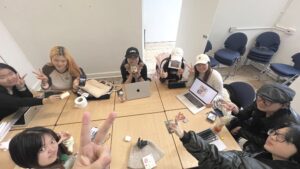
This event was Sleepwalkers’ last group event at summerhall. The activity plan starts from the objects around you and extends to a discussion about “real” and “fake” (the real and fake of the objects are completely subjective).
I brought a ticket from Linlithgow to Edinburgh and argued in the discussion that it was a “real” item while stating my reasons. First of all, the ticket is an actual entity that I can touch on paper. Secondly, the ticket is printed with the exact time, place, price and some specific conditions, these objective factors are real. The ticket was a proof that I had been to Linlithgow or Edinburgh, that I had boarded the train that day and gone from one place to another. In addition to its physical existence, the ticket is also a silent way of telling the story, in the form of a piece of paper, about the traces it has left in my life, the memory of my travel behind it, which is the “reality” of the memory level given to it by my behavior.
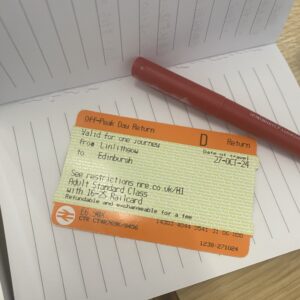
the train ticket
Among the items brought by others, the three glasses in different forms brought by Yubing Hu gave me a new inspiration. These three pairs of glasses are glasses with lenses, frames without lenses, and sunglasses. These three contrasting objects reflect the changing concept of “reality.” We wear glasses when we need a clearer view of the world. We wear sunglasses when we need to hide part of reality; As a decoration, frames can make an individual appear to be a “person wearing glasses.” This corresponds to the correction of reality, the filtering of reality and the camouflage of reality, and also makes me more aware of the diversity of “reality”, which is not only physical existence, but also subject to the influence of function, perception and social identity.
25 The changing role of the public in curation
The topic of this week’s lecture is public projects in exhibitions. My undergraduate major is related to this, and I have certain experience in the design and implementation of public exhibition projects. However, in my previous experience, “public projects” are very rigid forms, such as lectures and workshops, which are very common forms. Therefore, I am looking forward to receiving some explanations on public exhibition activities from different cultural contexts. Gabi’s lecture met my expectations. What she narrated told me that the Public Programme is not only an activity to support exhibition, but also a part of the exhibition itself. The Public is not only the audience to come to the exhibition, they can become the curators of the exhibition project and the co-producers of knowledge.
In my previous understanding, the public project of an exhibition is a one-way output of art education activities to participants. However, Gabi mentioned in the class that one of the responsibilities of curators is to create a truly meaningful public space, which made me realize that public projects should not be merely art education exported to the outside world, but rather the construction of educational relations negotiated with participants. This updated my consistent understanding of exhibition Public projects, and also changed my planning of the Public Programme in my personal curatorial projects. Originally, I planned to hold two simple art creation workshops as the public project of the exhibition, but now I am considering reducing the activity to one, recruiting participants in advance, collecting what they want to discuss or learn through the activity, and then further designing the activity (of course, I will prepare the basic framework of the activity in advance). In this process, participants will no longer passively accept the content of the listener, but actively express their understanding of the exhibition, become the co-creator of the exhibition content.
24 Sleepwalker Archives Vol.3: Sound as a Distorter of Reality
The third activity is a 5-day continuous activity, we will be divided into two groups of activities, through the form of “recording – playback – recording – playback” to build a multi-level sound superposition formed by the “real sound field”. The central question Sleepwalkers hopes to discuss through this event is “when technology is no longer a limitation, how do we face the reality of being mixed?” .
Each day, one participant in the group would use a recording device to continuously record the sounds around him (including the sounds he made) for one minute, and four participants in addition to the first participant would play the previous participant’s recording at the same time, and repeat the operation for five days to get the final audio.
In this activity, I no longer simply listen to the sound, but participate in the generation and distortion of the sound. The five of us would talk to each other and guess the source of the sound in the audio, and after several days of mixing and recording, the sound in the audio became indistinguishable. The first person’s clear recording of the wind around him as he walked along the road, the sounds of leaves rubbing against each other, and the sounds of cars moving on the road were gradually blurred, mixed with the sounds from the kitchen, the park, and other environments. Even though I was involved in the generation of this audio, I can no longer identify the sounds coming from me. I came to understand the central issue of the event. Can a sound be defined as real when it is superimposed? If so, where does its sense of reality come from? Take the audio we generated for example. If I think it’s real, then maybe it gets its authenticity from the sound of a car horn, or some birds. But I don’t think the audio can still be called “real,” even though the clips it contains are all real.
We often say that “hearing is false”, and the real sound can be sampled, played back, edited and synthesized indefinitely. Is the so-called “auditory memory” sometimes just an individual’s highly selective acceptance of the sound of the external environment, and then reconstruction of the heard sound according to the facts that he believes?
23 The role of publishing in curating
The topic of this week’s lecture is “Publishing as curatorial practice”. Before that, my understanding of publications in curating exhibitions has always been a kind of auxiliary and extension of exhibitions, such as guide manuals, artist interview records, exhibition record books, etc., whose main function is to archive, disseminate or summarize exhibition experience. But this week’s lecture gave me a new understanding of the role of “publishing” in curating, and the publication itself can be an independent and complete curatorial exhibition.
The lecture began with an introduction to Transmission Gallery’s The Phone is the Keyhole; The Penpot, The Heart, published in collaboration with Ruine Munchen. I thought it was just a documentation of an exhibition, only to find it was not a record, but a complete curatorial project. The publication constructs a non-linear, decentralized publishing logic through artist interviews, in-committee conversations, and other textual content. This is different from what I used to understand as a publication, which does not seek to explain or summarize a certain concept, but always maintains an open, inclusive, unfinished state. Another case, Give Birth to Me Tomorrow, gave me a new understanding of the form of publication. Like the previous case, it is not a publication in the traditional sense, but a multi-frequency curatorial form composed of sound, image, moment capture and connotation of emotions. The audience can enter and leave repeatedly as they read. The publication is constantly creating openness and malleability, making its content a device that can “breathe.”
22 Sleepwalker Archives Vol.2: The Theater of Reality in Contemporary Art
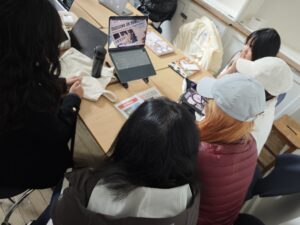
The theme of Sleepwalkers’ second event is The Theater of Reality in Contemporary Art, and we chose the classic film The Truman Show as the main medium of the event. We will think about the question of who is controlling the reality of this film. This makes me not just watch the film, but with a kind of examination and disassembly eyes, to observe how some of the design and details in the film affect people’s perception of “reality”. After watching, we divided into two groups for discussion. The task of my group b is to analyze why “we” think the world is real from the perspective of the audience, and to extract a keyword as the theme of observation. After the group discussion, we gathered for a deeper discussion: Is Truman free? Have we ever been in the Truman show? What’s the difference between us and Truman now? On the first question, most people think that Truman was not free before, but he may have been free after he escaped the set world. But an objection was raised: Even if he left the studio, he might still enter the next “reality” where everything was set. For the second question, someone shared social media big data that they had trained themselves by repeatedly searching for keywords to prove that their status on social media was actually a “Truman’s world.” For example, after watching a video about pets, social media algorithms will continue to push similar content, forming a user’s preferences as the theme of the information cocoon, so that users mistakenly believe that the world’s mainstream wind is what they see. On the third question, we had a heated discussion. Some argue that our current situation has more options than Truman’s, but others argue that Truman at least has the option to escape, and that we can only passively accept it, even if we are aware of the existence of the information cocoon.
The key word I wrote for the movie is “scripted life.” When life has a script, is the truth in people’s eyes just an unexposed lie? The Truman Show made me think about the reality of certain actions and things in everyday life. Truman’s life in the behind-the-scenes “world” is similar to that of modern humans: we already live in a “real” world made up of algorithms, consumer symbols, and media narrative lights. We are used to creating a “human set” on social media to construct a nearly perfect self that is different from reality. This self-symbolic behavior is undoubtedly stepping into the curtain and becoming the initiative of Tulu Men. But the film also conveys a message that reality is not something that exists objectively, but human resistance to false consciousness. When Truman chose to come out of the “blue sky” of falsehood, he proved by his actions that “truth” exists in the questioning of falsehood. In today’s deluge of AI-generated content, maintaining the ability to question fake content could be the real thing.
21 Venue for individual exhibition projects
Based on the initial idea of a personal curatorial project and the results of field investigation, I finally decided to choose the exhibition venue between Tramway in Glasgow and Another Art Museum in Guangzhou. The two venues each have their own advantages that fit the theme of the exhibition, but also have their own limitations. Here are some of my specific comparative analysis of various aspects of the two venues.
Space characteristics and hardware facilities
The two galleries were converted from abandoned Spaces: Tramway was converted from an abandoned tram factory, while Another Art Museum was formerly a pharmaceutical factory. As part of Glasgow’s industrial heritage, the Tramway main gallery has an extremely high height and a large number of exposed metal structures, which are ideal for large-scale installations or immersive environments.
The main exhibition hall of Another Art Museum also has spacious interior space. Different from the main exhibition hall of Tramway, the exhibition hall of Another Art Museum has three floors, among which the middle of the first and second floors is set up an empty space to accommodate large-scale installations, and the rest is a classic white cube space. This unadorned interior space provides ample leeway for the curators to play freely around the theme of the exhibition.
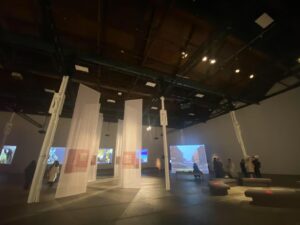
Tramway’s main exhibition hall
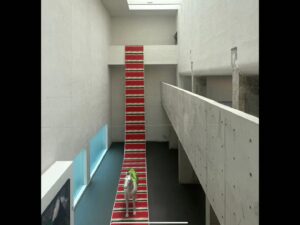
Another Art Museum’s main exhibition hall
Geographical environment, audience base, resource support and theme freedom
The inevitable part of holding an exhibition is to comprehensively consider the local urban cultural background, the audience base and a series of other objective factors. Glasgow, where Tramway is located, and Guangzhou, where Another gallery is located, each have their own strengths in hosting contemporary art exhibitions. Glasgow, where Tramway is located, has a long artistic tradition and is known for its rich art education resources (such as the Glasgow School of Art) and strong contemporary art atmosphere. The audience here is mainly art students, scholars and art industry practitioners, and the audience is highly receptive to conceptual art, experimental video and social critical works. In addition, Glasgow’s exhibition funding comes from the Public Art Fund, which is suitable for collaboration with academic institutions and the European Art Network. If my exhibition wants to explore the subconscious, psychology, social dreams in depth, Glasgow’s art ecology and academic environment will provide ideal support. Guangzhou, where Another Art Museum is located, is one of China’s economic and cultural centers. With a large audience of young people in Guangzhou who are receptive to interactive, immersive experiences and digital art, social media (e.g., Xiaohongshu, Douyin, Weibo) can quickly amplify the impact of an exhibition. If my exhibition can highlight the sense of technology, new media art and immersive experience, Guangzhou is undoubtedly the ideal choice. However, curatorial freedom in Guangzhou can be limited by Chinese cultural censorship, and some works involving social and conscious exploration may need to be adjusted. In addition, Guangzhou’s art market is highly commercialized, and exhibitions need to find a balance between artistry and market demand.

